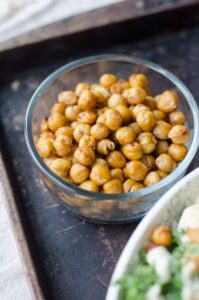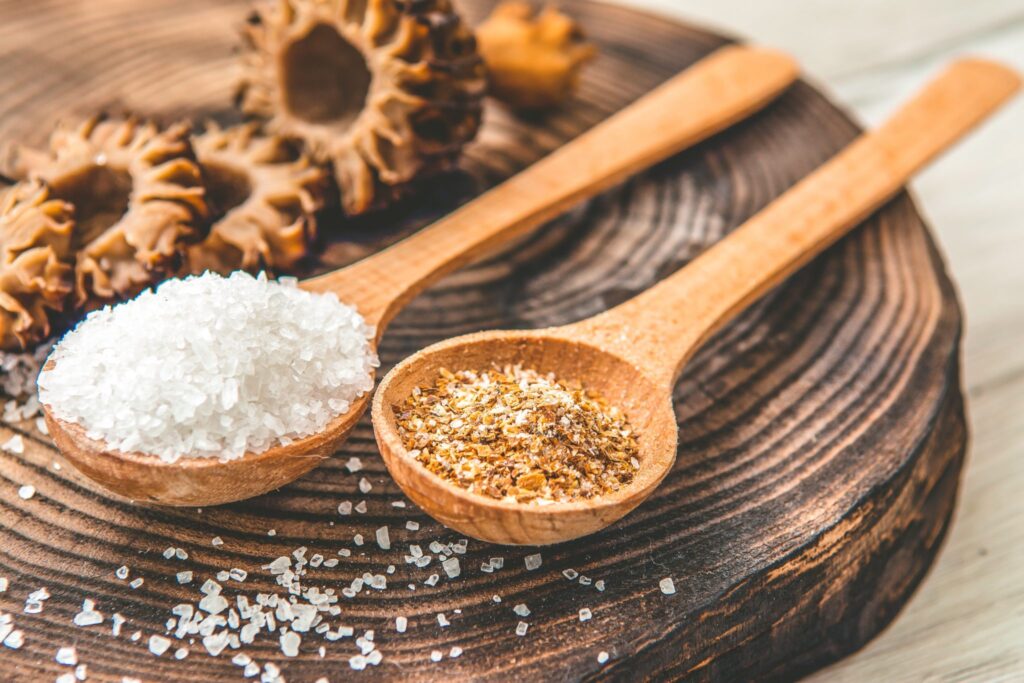Antinutrients – oh hell that’s a scary word.
And guess what?! This term is scaring people always from wholesome, nutrient-packed, healthy foods for no good reason. This is the problem with access to any and all information. Information can easily go viral and most of that information doesn’t tell the whole story.
Many of you are probably thinking – well what exactly are we talking about here? We are mainly talking about legumes (beans & lentils), nuts and grains BUT did you know that there are antinutrients in almost all plants –  which are some of the healthiest, most nutritious foods in the world?
which are some of the healthiest, most nutritious foods in the world?
Many people I talk with or work with hear the word phytic acid, lectins, tannins, oxalates or goitrogens and immediately allow fear to set in because of the way these antinutrients are advertised.
Most plants are well equipped with their own protection against being eaten. This is a simple part of nature. While there are several types of antinutrients that exist (way more than I listed above), phytic acid and lectins (and even oxalates) have been getting a lot of attention due to the strength of the Paleo eating style.
Let’s try to make some sense of some of the most commonly talked about antinutrients among my community of people – phytic acid, lectins, and oxalates.
Phytic acid
This compound is found in nuts, seeds, legumes, and grain and really gets a bad rap for blocking the absorption of minerals like magnesium, calcium, zinc, and iron
Lectins
This protein is found in grains and legumes (and some plants & seafood) and they bind to carbohydrates. We are unable to digest these proteins. While our bodies produce antibodies to lectins, which may cause a negative response in our body (most people experience GI distress) – they also have health-promoting properties that decrease our risk for disease that no one really talks about! Advocates of the Paleo Diet (which recommends steering clean or beans/legumes and grains – but they can have nuts/seeds?!) sure won’t tell you that the lectins found in soybeans have some amazing antitumor effects and are being considered as a potential cancer therapy!
Oxalates
This compound is a naturally occurring substance found in food, mainly plants. Some foods that are high in oxalates are parsley, nuts, seeds, cacao, berries, chard, and spinach. There were blog headlines a few years ago telling people to stop eating spinach and other greens because of their high oxalate content. And guess what, there were people who did. Sigggghhhhh.
Let’s get Logical
Now the time has come to logically put all this information together.
Are you a healthy individual free of any food allergies, autoimmune disorders or inflammatory bowel issues (IBS). Let me be very clear – you should have no worries about any of these anti-nutrients and for the love of God, please do not stop eating spinach (or greens for that matter)! As a consumer, you should be very cautious of any eating styles that completely eliminate food groups.
 Ya see, there are many ways to limit the amount of these antinutrients we get in our diet. We don’t eat legumes/beans/grains dry (that’s a big health no-no) or eat gallons of spinach/chard at one meal. We soak, cook, sprout, and ferment our foods which is the classic method of decreasing the content of these antinutrients.
Ya see, there are many ways to limit the amount of these antinutrients we get in our diet. We don’t eat legumes/beans/grains dry (that’s a big health no-no) or eat gallons of spinach/chard at one meal. We soak, cook, sprout, and ferment our foods which is the classic method of decreasing the content of these antinutrients.
Let’s take water and oxygen as another example. Did you know that water and oxygen are toxic? We simply cannot eliminate water or oxygen – but the important key here is the rate of consumption. Have you ever heard of someone dying from drinking too much water? I have – but who drinks 3 gallons of water in one sitting? I guess we know the outcome of that.
Now as in any case, there are exceptions to the rule because we are each biochemically unique individuals with different needs and have ranging health issues (insert my love for the Metabolic Balance® program and the 28-day Ultimate Whole Foods Refresh). Those who suffer from autoimmune conditions, IBS or leaky gut (among the few) should really consult with a nutrition professional as going grain free, nut free, legume free, nightshade free ect., may really be key in helping them heal their gut and reduce inflammation.
Many of my clients are grain free because I feel strongly about having non-GMO grains and honestly, most clients feel better without grains. If my clients have any health issues, I focus on healing those issues first before introducing any foods that may be potential barriers to optimal health for them. For healthy individuals – consuming a variety of foods such as beans, vegetables, nuts/seeds and mushrooms contribute to a beneficial, healthy lifestyle due to their fiber, alkaline and phytochemical content.
I hope this clears the air a bit and can relieve any unnecessary stress – cause there’s already enough of that. If you are looking for some more guidance – I’m always here.
In health xxoo



